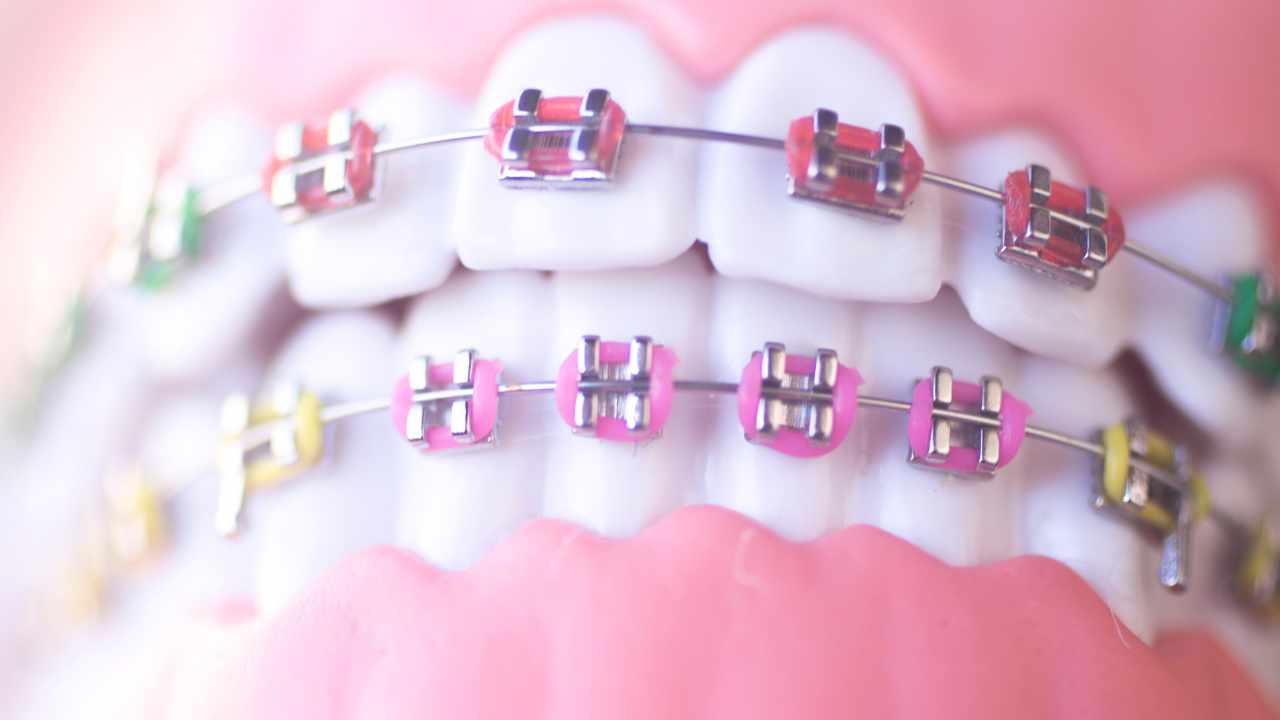In the realm of orthodontic treatments, metal braces stand as one of the most traditional yet effective methods for correcting misaligned teeth. While modern advancements have introduced alternative options, metal braces continue to reign supreme for their reliability and affordability.
What are Metal Braces?
Metal braces, also known as traditional braces, consist of brackets, wires, and elastic bands. These components work together to apply gentle pressure to the teeth, gradually shifting them into proper alignment.
History of Metal Braces
The concept of using metal to straighten teeth dates back to ancient times. However, it wasn’t until the 20th century that orthodontists began refining the design of metal braces into the familiar form we see today.
Advantages of Metal Braces
- Effective: Metal braces are highly effective in correcting various orthodontic issues, including overcrowding, gaps, and misalignment.
- Affordability: Compared to newer orthodontic treatments, metal braces typically offer a more budget-friendly option for achieving a straighter smile.
- Durability: Constructed from high-grade stainless steel, metal braces are incredibly durable and can withstand the rigors of orthodontic treatment.
Disadvantages of Metal Braces
- Visibility: One of the primary drawbacks of metal braces is their conspicuous appearance, which may cause self-consciousness, especially among adult patients.
- Maintenance: Proper oral hygiene becomes paramount when wearing metal braces, as food particles can easily get trapped, leading to plaque buildup and increased risk of cavities.
- Discomfort: While discomfort is common during the initial adjustment period, some patients may experience soreness or irritation throughout the treatment duration.
Components of Metal Braces
Understanding the key components of metal braces is essential for grasping how they work to straighten teeth effectively.
Brackets
Brackets are small, metal attachments bonded to the front surface of each tooth. These brackets serve as anchors for the archwire and allow for precise control over tooth movement.
Archwire
The archwire connects all the brackets and applies consistent pressure to guide the teeth into alignment. Orthodontists periodically adjust the archwire tension to maintain progress throughout the treatment.
Ligatures
Ligatures, or elastic bands, secure the archwire to the brackets. These bands come in various colors, allowing patients to personalize their braces and express their unique style.
Procedure of Getting Metal Braces
Embarking on the journey to straighter teeth with metal braces involves several essential steps.
Consultation
The first step is a comprehensive consultation with an orthodontist. During this visit, the orthodontist will assess your dental health, discuss treatment options, and address any concerns or questions you may have.
Placement Appointment
Once you’ve decided to proceed with metal braces, the placement appointment is scheduled. During this visit, the brackets are carefully bonded to your teeth, and the archwire is secured in place.
Adjustments
Throughout the treatment process, regular adjustments are necessary to ensure the teeth are gradually moving into their desired positions. These adjustments typically occur every few weeks and involve tightening or replacing the archwire.
Caring for Metal Braces
Proper care and maintenance are crucial for ensuring the success of your orthodontic treatment with metal braces.
Oral Hygiene
Maintaining excellent oral hygiene habits is essential when wearing metal braces. Brushing after every meal and flossing daily helps prevent plaque buildup and reduces the risk of tooth decay and gum disease.
Dietary Restrictions
Certain foods can damage or dislodge braces brackets, leading to treatment delays or complications. Avoid sticky, chewy, or hard foods that could potentially cause damage to your braces.
Regular Check-ups
In addition to routine adjustments, attending regular check-up appointments with your orthodontist allows them to monitor your progress and address any issues that may arise promptly.
Common Concerns about Metal Braces
While metal braces offer numerous benefits, it’s natural to have concerns about the treatment process.
Pain and Discomfort
During the initial adjustment period and after routine adjustments, some patients may experience mild discomfort or soreness. Over-the-counter pain relievers and orthodontic wax can help alleviate these symptoms.
Impact on Appearance
The visibility of metal braces can be a concern for some patients, particularly adults. However, advancements in orthodontic technology have resulted in smaller, sleeker braces that are less noticeable than their predecessors.
Duration of Treatment
The length of time required for orthodontic treatment with metal braces varies depending on the severity of the orthodontic issues and individual factors. On average, treatment typically lasts between 18 to 36 months.
FAQs
Are metal braces suitable for adults? Yes, metal braces are suitable for patients of all ages, including adults. They offer a reliable and effective method for correcting orthodontic issues and achieving a straighter smile.
Do metal braces interfere with speaking or eating? While there may be an adjustment period initially, most patients adapt quickly to wearing metal braces and can speak and eat comfortably. Avoiding certain foods and practicing proper oral hygiene are essential for minimizing discomfort and inconvenience.
Can I still participate in sports or play musical instruments with metal braces? Yes, you can continue to participate in sports and activities while wearing metal braces. However, it’s essential to wear a protective mouthguard during contact sports to prevent injuries. Playing musical instruments may require some adjustment initially, but most patients can adapt with practice.
Will I need to wear a retainer after my metal braces are removed? Yes, wearing a retainer is typically necessary after completing orthodontic treatment with metal braces. A retainer helps maintain the new position of your teeth and prevents them from shifting back over time.
Can I choose the color of the elastic bands on my metal braces? Yes, one of the fun aspects of wearing metal braces is selecting the color of the elastic bands that hold the archwire in place. This allows you to personalize your braces and showcase your personality.
How often do I need to visit the orthodontist during treatment? Regular visits to the orthodontist are essential for monitoring progress, making adjustments, and addressing any concerns. Typically, appointments are scheduled every four to six weeks throughout the duration of treatment.
Conclusion
Metal braces have stood the test of time as a reliable and effective solution for achieving a straighter smile. Despite advancements in orthodontic technology, metal braces remain a popular choice for patients seeking affordable and predictable results. By understanding the components, procedure, and care involved in metal braces, individuals can embark on their orthodontic journey with confidence, knowing they’re investing in a time-tested solution for a lifetime of smiles.





